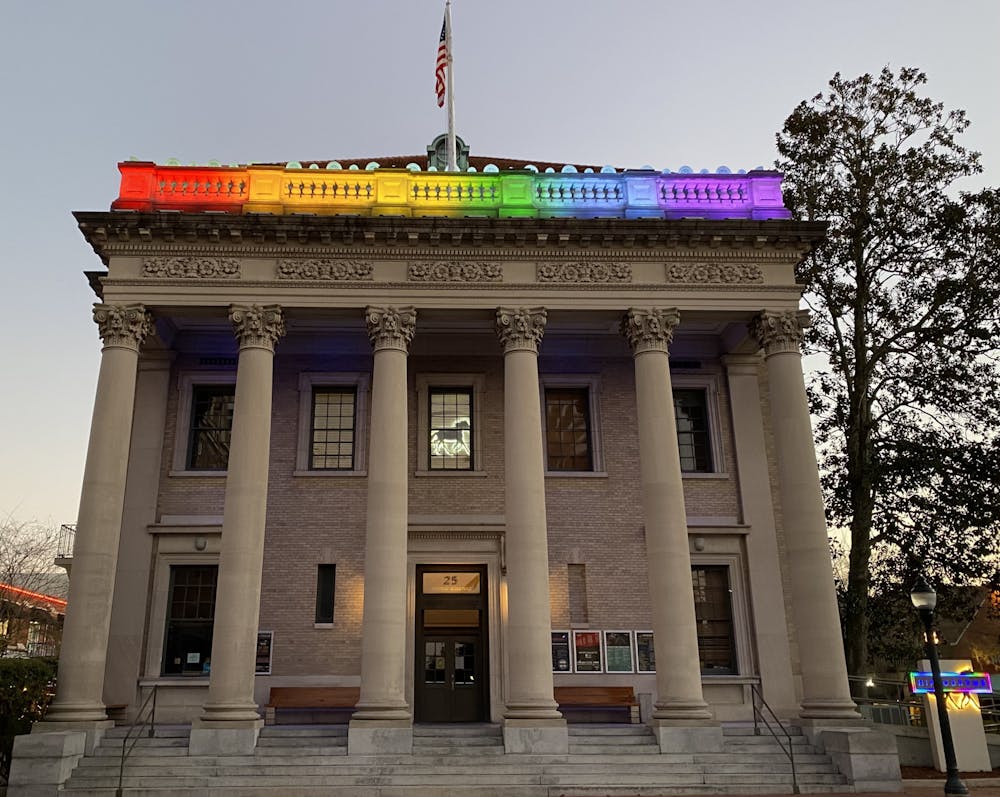The Hippodrome Theatre went from a humble post office in 1911 to one of Florida’s most successful historic preservation projects in just over 100 years. Work on it isn’t finished yet, and if the next 100 years are anything like the previous, it may never be.
Historic preservation is an endless process that is individually tailored to each space, but Jay Reeves, a 64-year-old architect, references a common set of guidelines for each project.
“Looking at historic buildings has to do with the significance to the community, the history of the building [and] who was associated with it,” Reeves said.
The Hippodrome’s original form as a post office didn’t hold major cultural significance, but its location in the center of Gainesville’s downtown was crucial to its success, Richard Gartee said. Gartee, a 75-year-old historian and novelist, chronicled the theater’s rise to prominence in Gainesville.
After putting on its first play in January 1981, the theater boasted 5,000 regulars by 1984.
“That means 5,000 people came down here eight times a year, at least, who would probably never come downtown,” Gartee said. “It served as this focal point that drew people to downtown.”
The Hippodrome was a much-needed landmark for a dilapidated Gainesville, said 71-year-old lawyer and developer Linda McGurn.
“The storefronts were empty,” McGurn said. “The businesses had moved out to shopping centers. We had 0.05% of the people living in Gainesville, and we had 13% of the violent crime, 23% of the robberies.”
McGurn and her husband, Ken, took a chance on the downtown area that had been all but abandoned and built the Sun Center, a four-year project aimed to complement the Hippodrome’s signature architecture and revitalize Gainesville.
The Hippodrome’s design is one of the biggest reasons why it is a key target for preservation. A building’s architecture must be indicative of local or regional styles to warrant the costly process of restoring it. Amanda Rodriguez Demaria, a 44-year-old economic developer, has led the process for the Hippodrome over the last year.
“Historic preservation, when done correctly, is not cheap,” Demaria said. “It’s not meant to be cheap. It’s meant to last. These buildings were created to last forever.”
Demaria specializes in small, historic municipalities like Gainesville, where she’s found a small area doesn’t necessarily mean a small budget.
For instance, the City of Gainesville allotted $500,000 of its 2023 fiscal budget to the preservation of the Historic Heritage Trail in the Fifth Avenue and Pleasant Street neighborhoods, more than triple the money from the previous year.
Historic buildings have no shortage of challenges, the greatest of which is to pay homage to the past while embracing the future.
One approach is structural, in which architects and developers pursue grants that reward climate-smart preservation and make strategic changes to lower maintenance costs.
The other approach emphasizes the rich cultural history of the buildings, led by people like Phillis Filer, 68-year-old vice president of Cotton Club, a museum dedicated to the preservation of Black history in Gainesville. A long-time Gainesville resident, Filer has invested years into community awareness and participation.
“The community should always be engaged in projects that affect their lives and their lifestyles,” Filer said. “Having someone come in and say, ‘This is what it’s going to be,’ without understanding the dynamics of that community or their preservation or the history of it makes it hard for people … to identify with it.”
Filer’s work with the Cotton Club Museum has opened her eyes to some of Gainesville’s lesser-known historic buildings, especially those home to its first Black residents. Accessibility to underserved populations has been a cornerstone of Gainesville’s buildings, but contemporary accessibility is somewhat limited, Filer said.
The Americans with Disabilities Act was passed in 1990, putting forth a comprehensive list of civil rights guaranteed for Americans with disabilities, but a major omission was made. Properties listed on or eligible for the National Register of Historic Places are allowed alternative requirements to meet obligations for accessibility, which lowers the standard of access disabled people are ensured.
Measures to improve accessibility can be harmful to some buildings and impossible for others, like the Hippodrome, architect Jay Reeves said. The space boasted an elevator for 112 years, described by some attendees as Gainesville’s greatest thrill ride, but the elevator’s recent failure has left Bob Robins, a 61-year-old Hippodrome facility manager, with a handful of problems.
“Every time we open a hole, that just opens a Pandora’s Box,” Robins said. “It’s endless… the bigger the hole, the bigger that box becomes. The problems compound each other.”
Despite the seemingly constant stream of problems historical buildings bring, Filer said she is certain that they are worth the work they demand.
“It’s always good to know your history in order to know why you are where you are,” she said, “and how to move forward.”
Contact Bea Lunardini at blunardi@alligator.org. Follow her on X @bealunardini.






